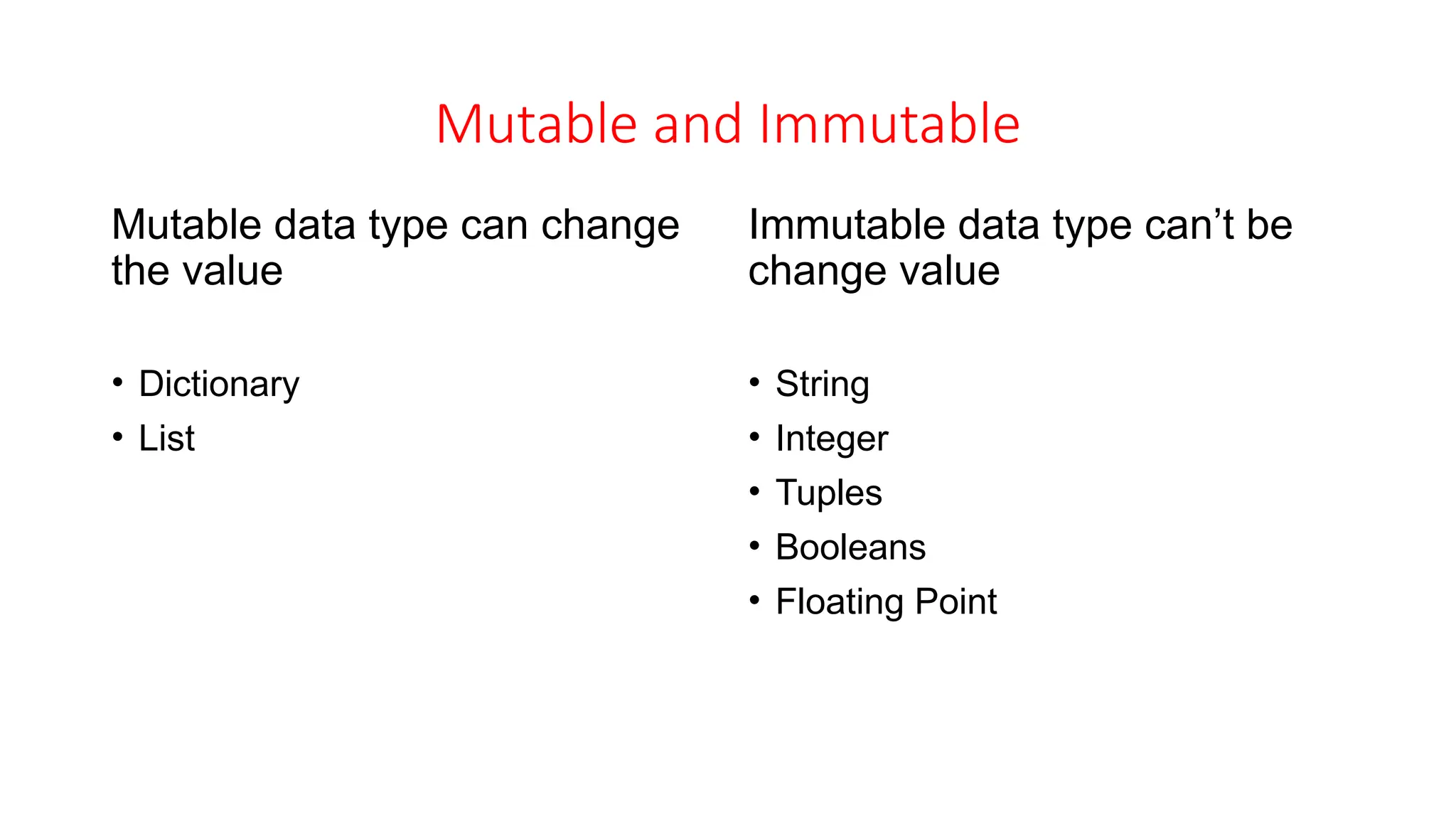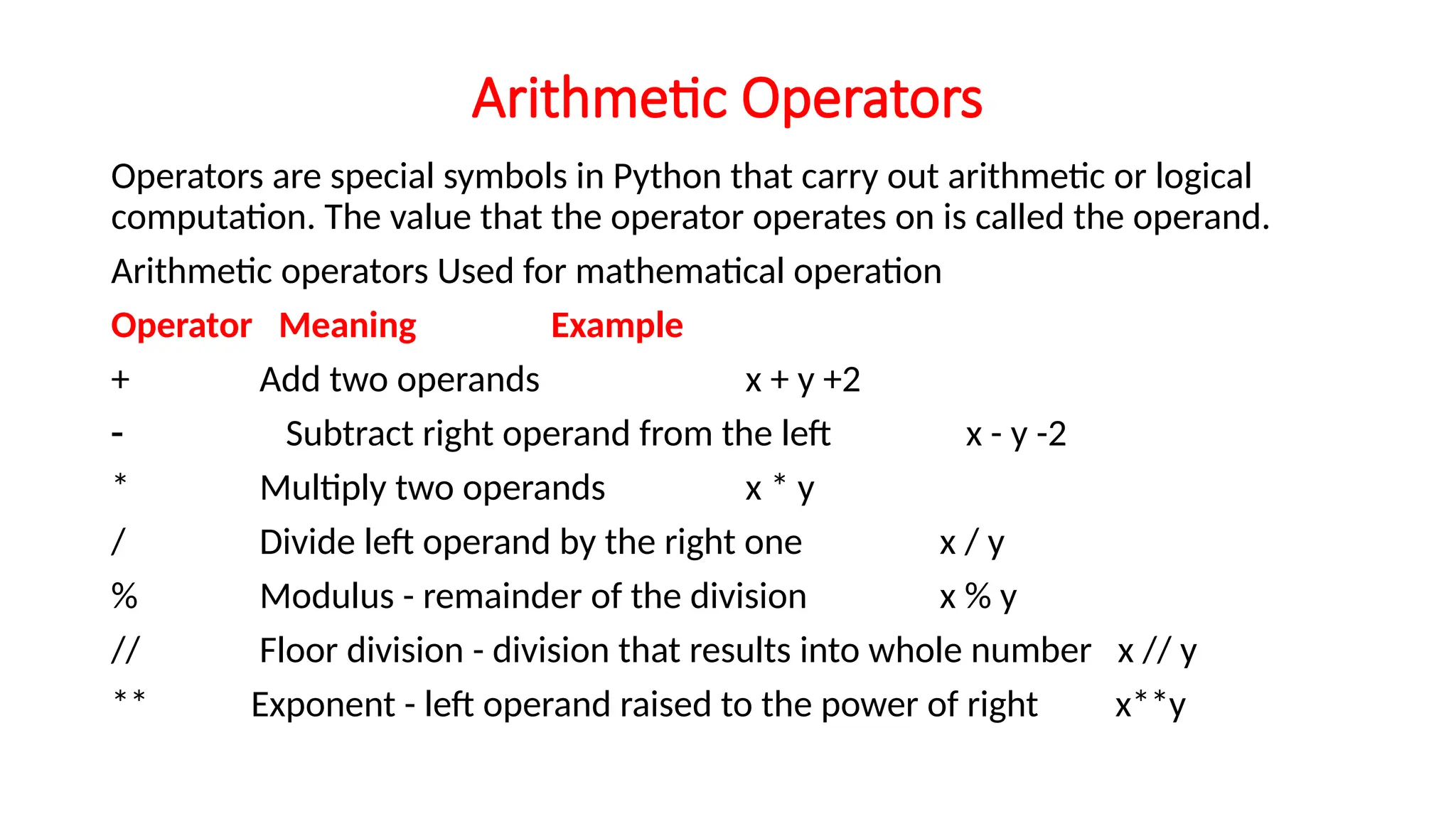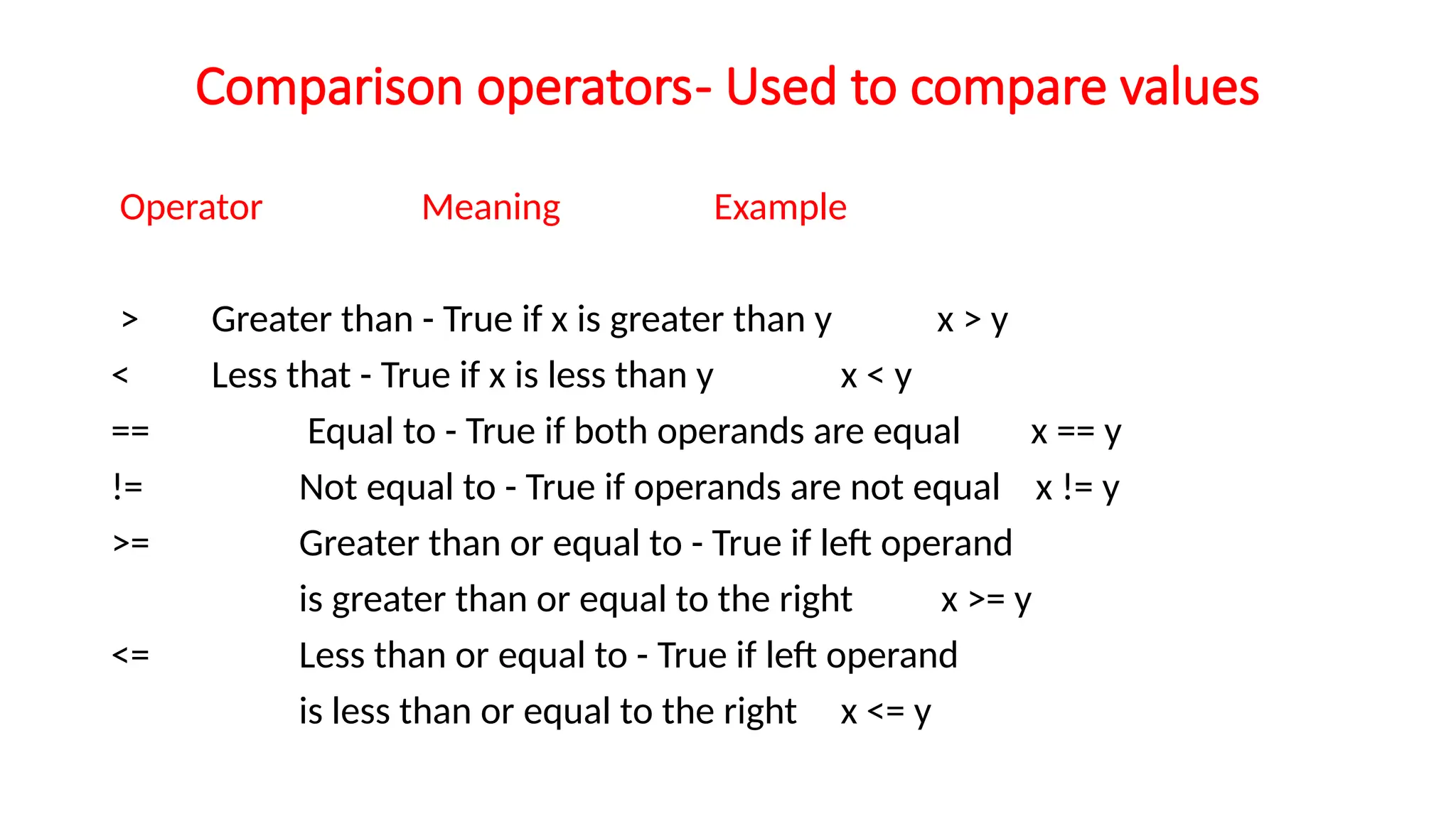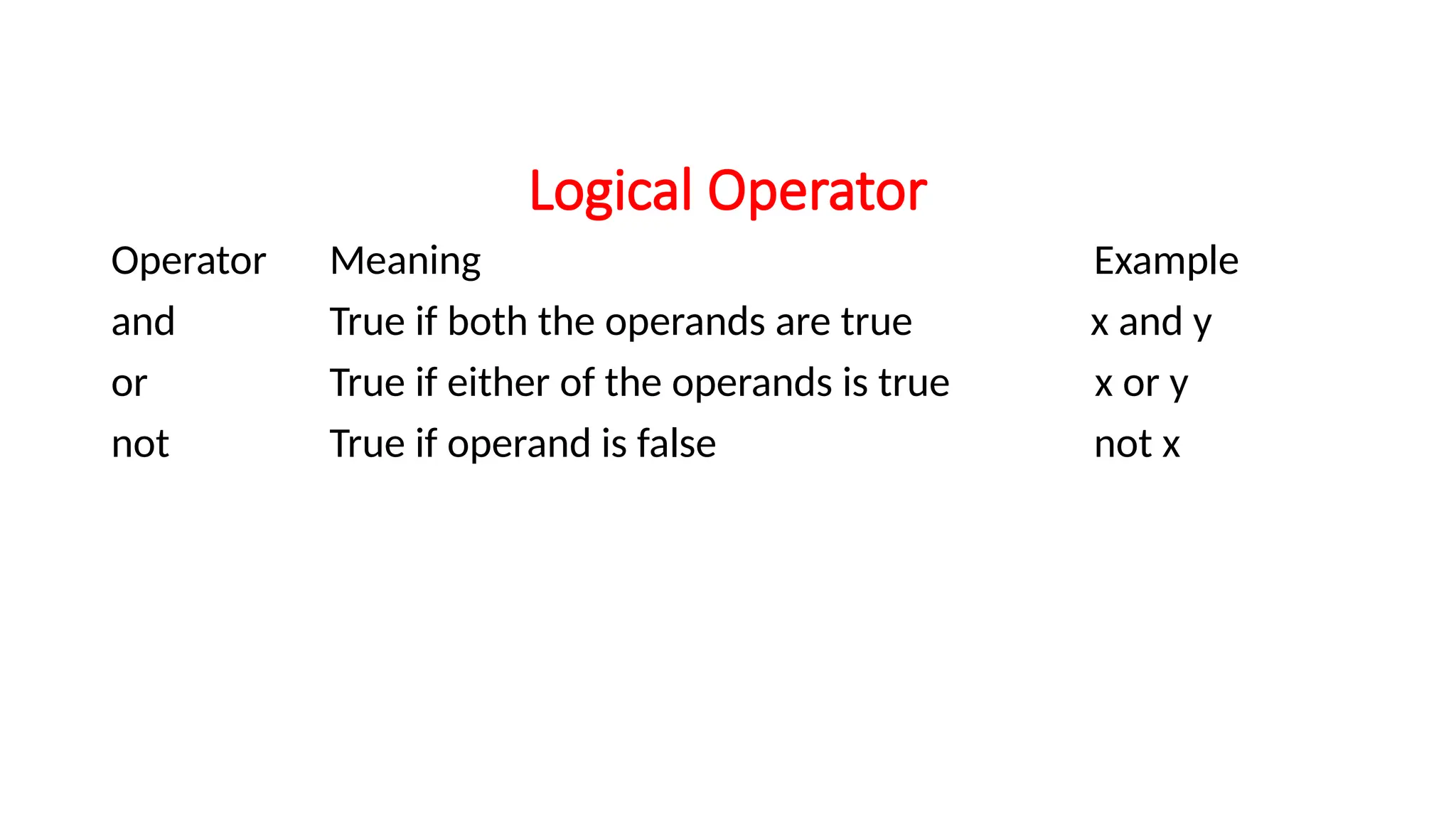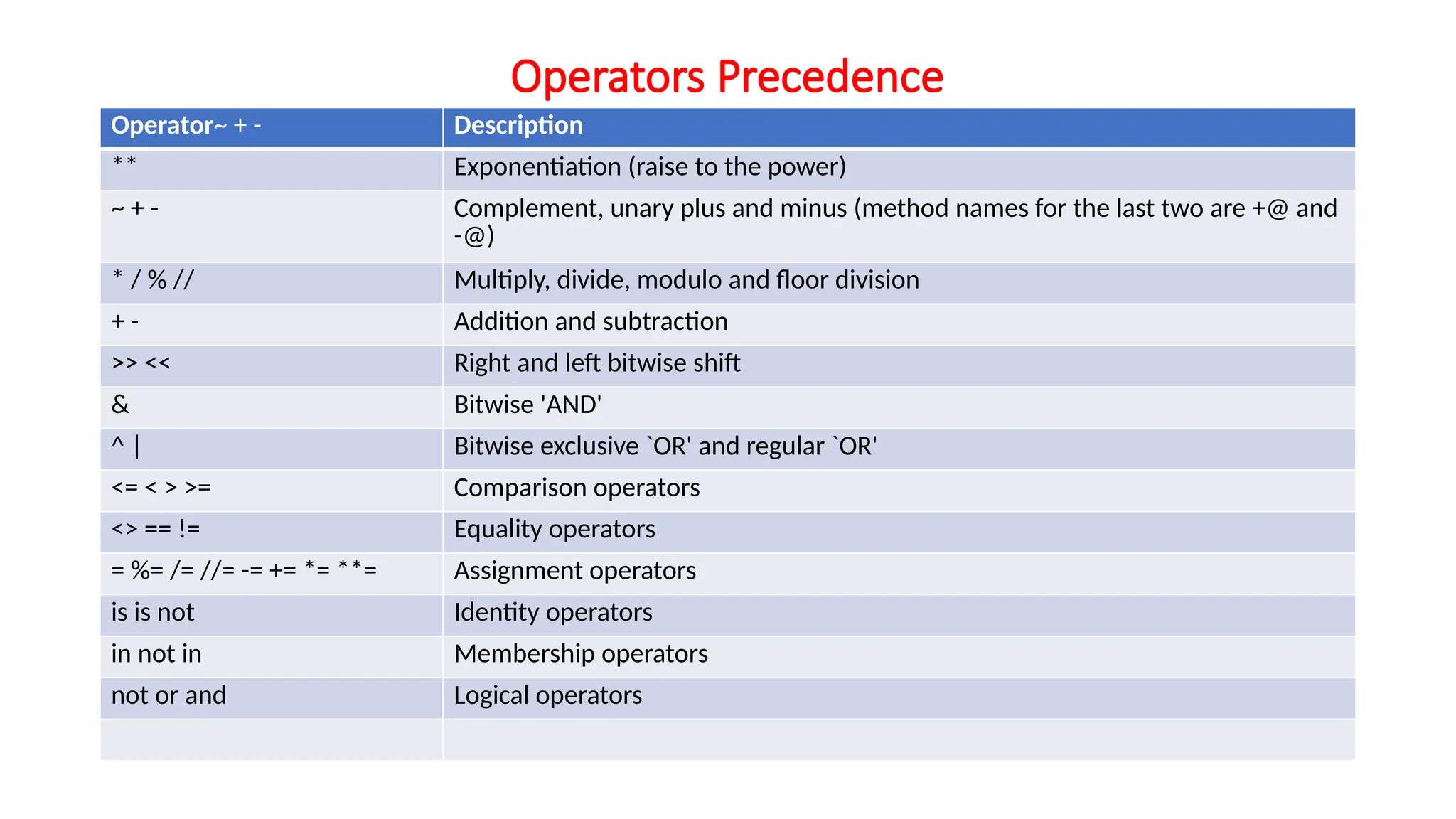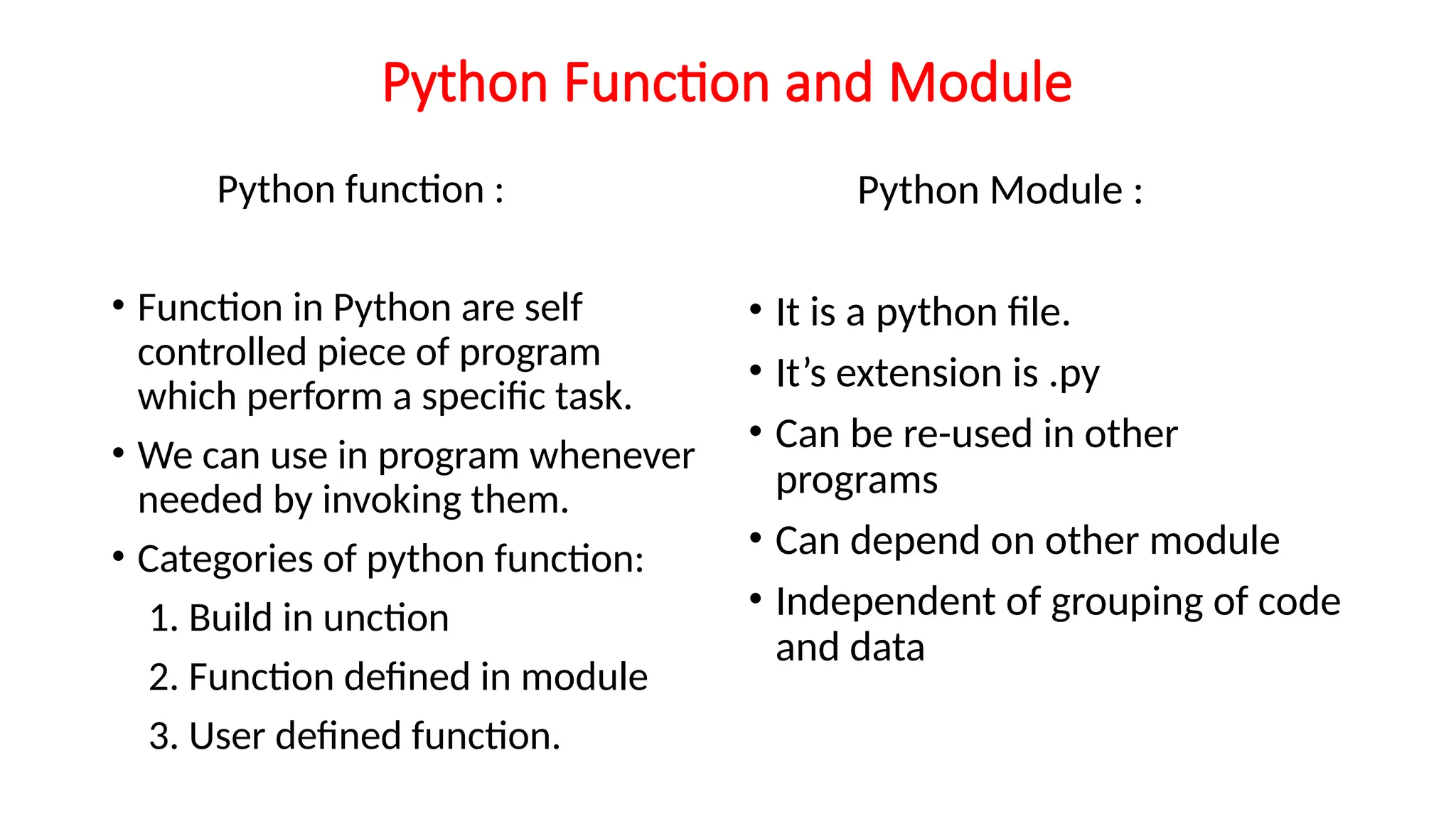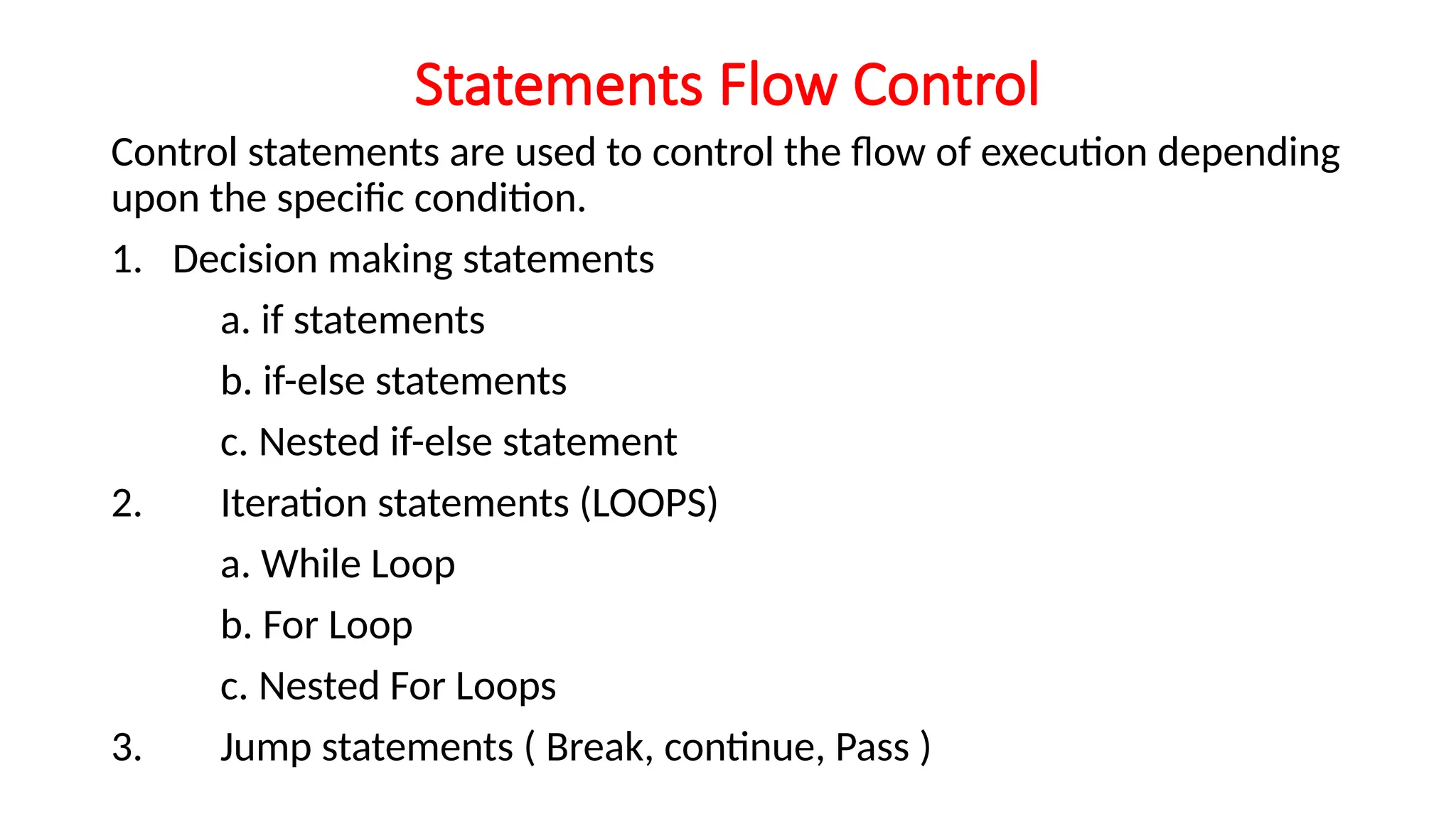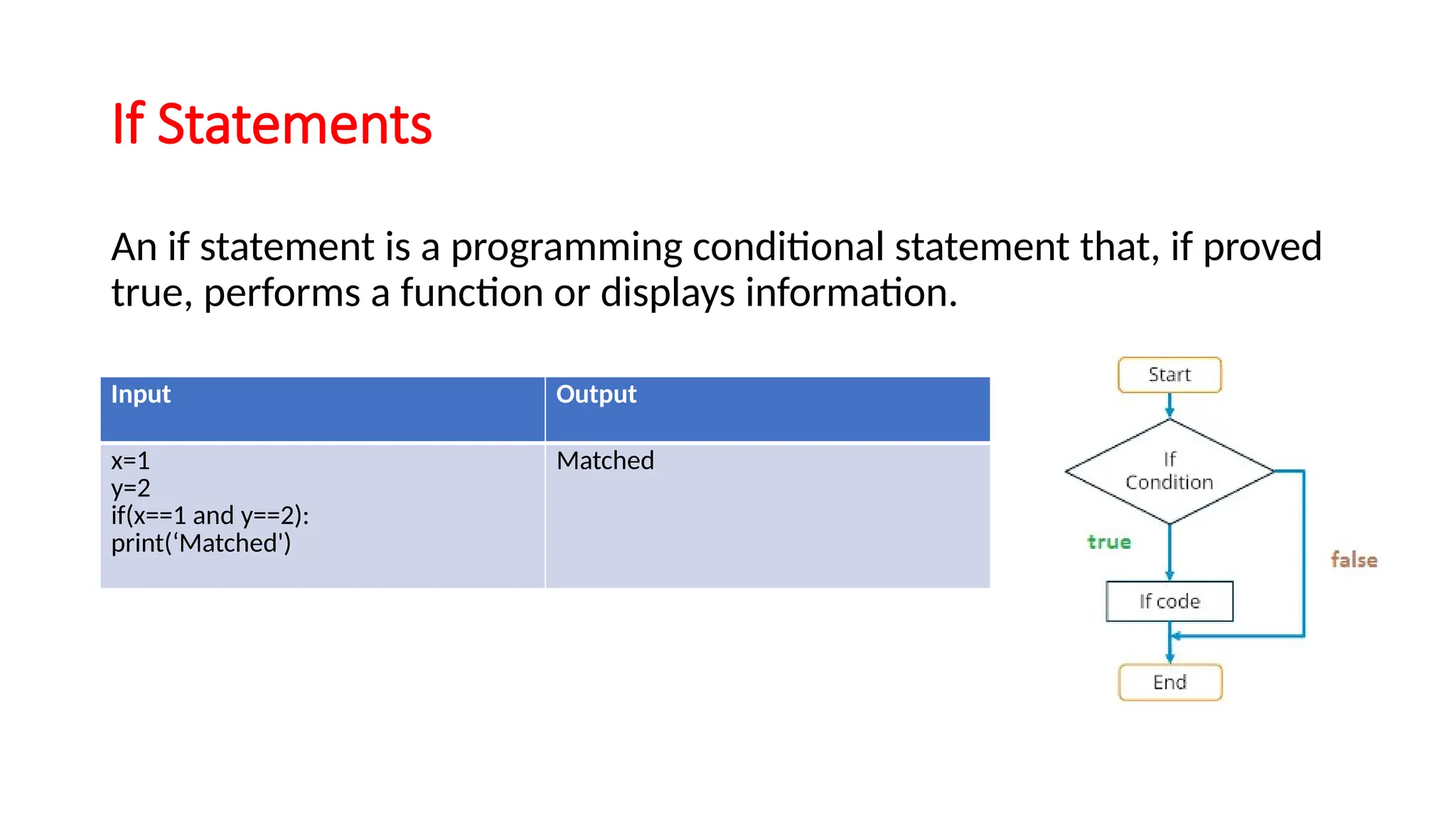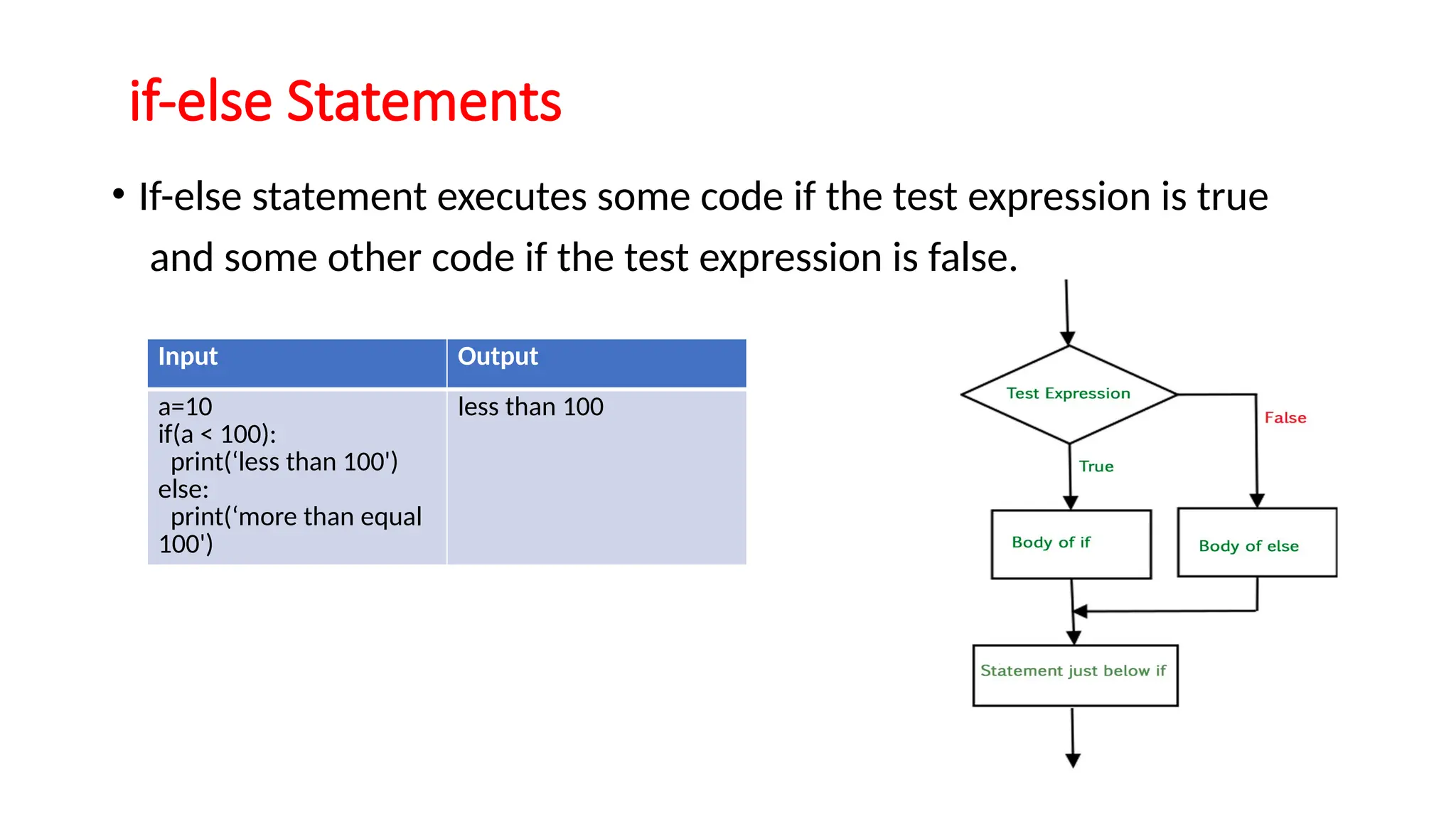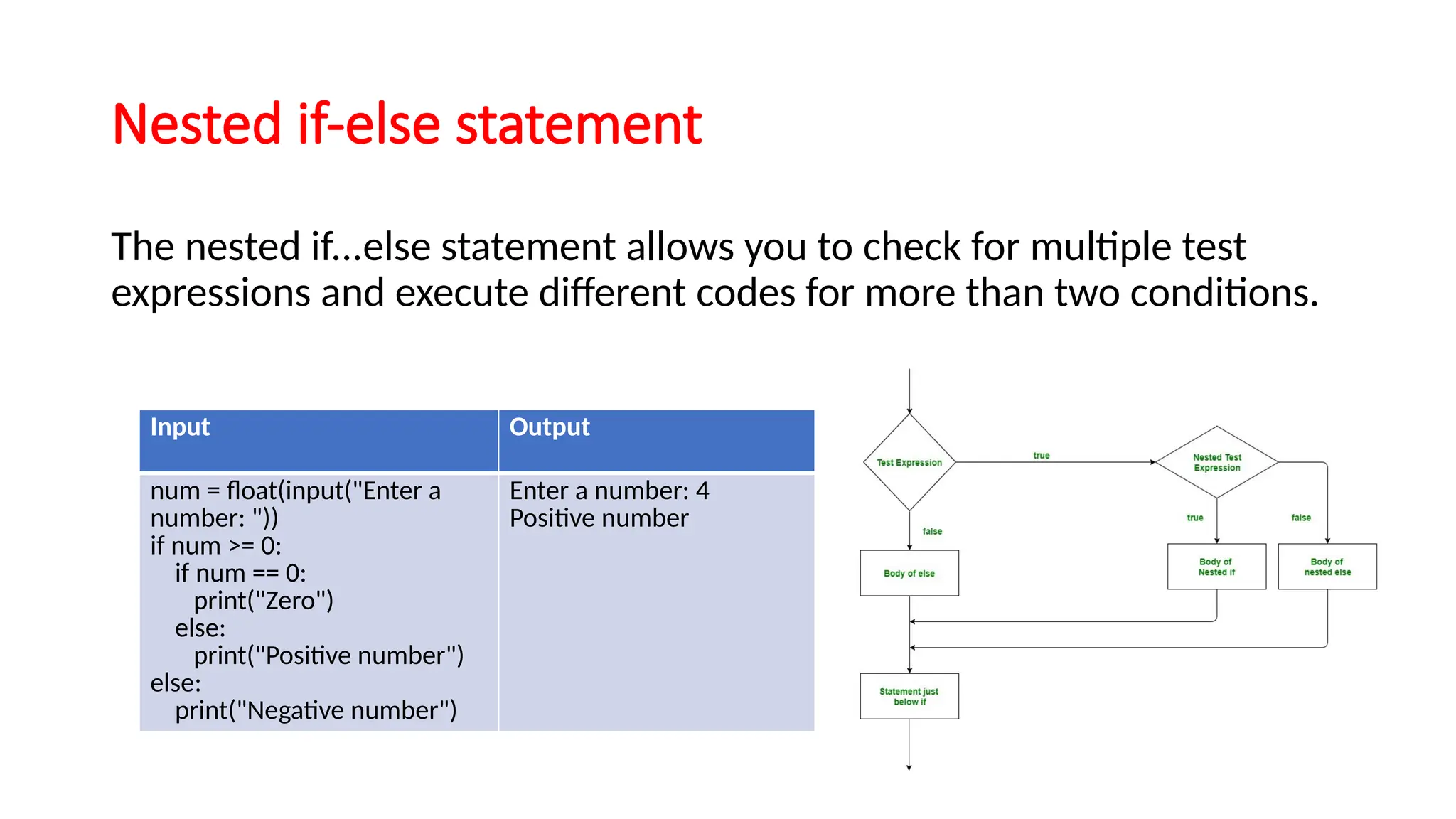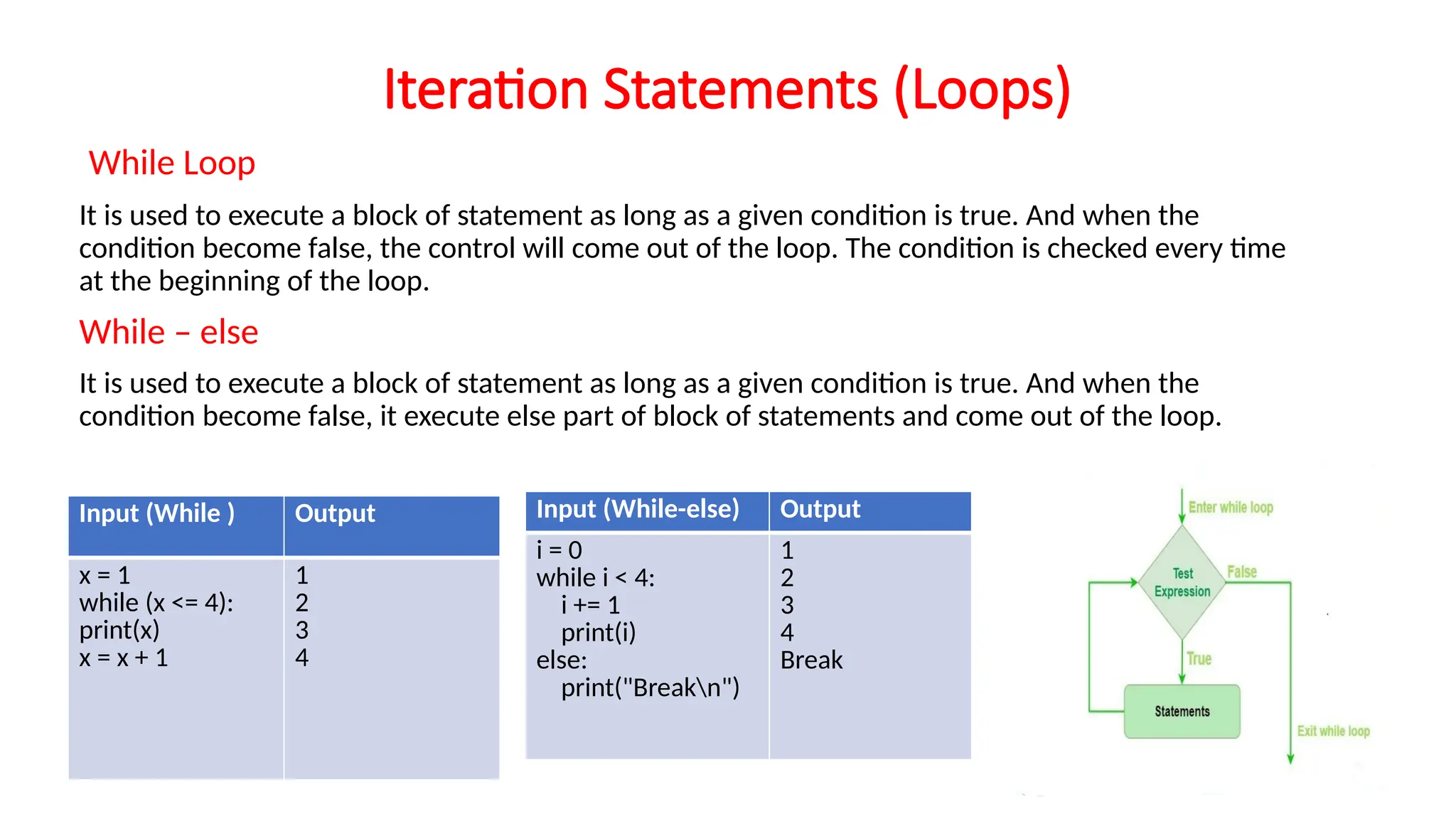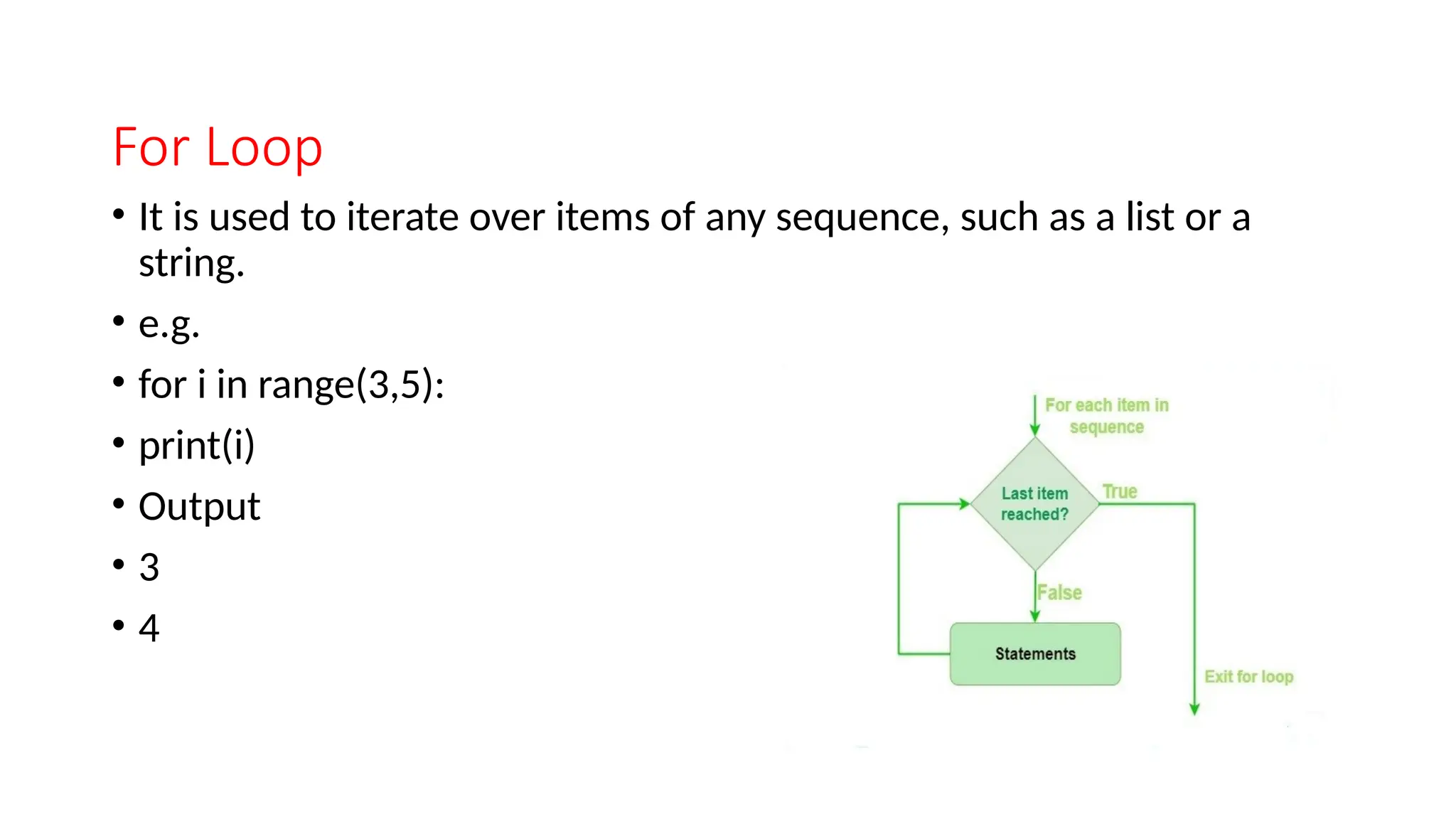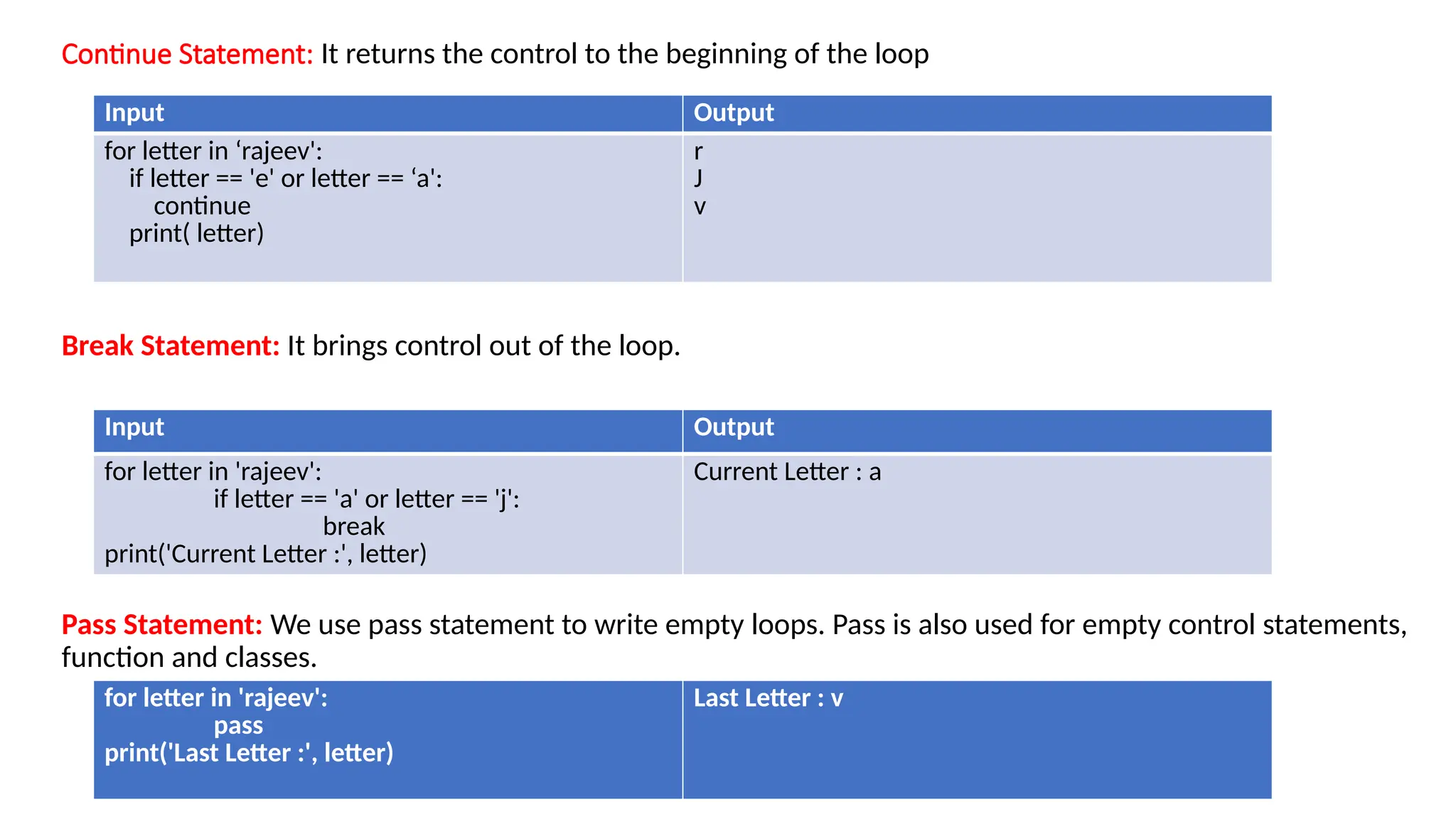The document provides a comprehensive overview of Python, covering its features, data types, and programming constructs. It introduces various aspects such as data types (numbers, strings, lists, tuples, dictionaries), functions, and flow control mechanisms (if statements, loops). Additionally, it discusses the pros and cons of Python as a programming language, highlighting its simplicity and versatility as well as its performance drawbacks.
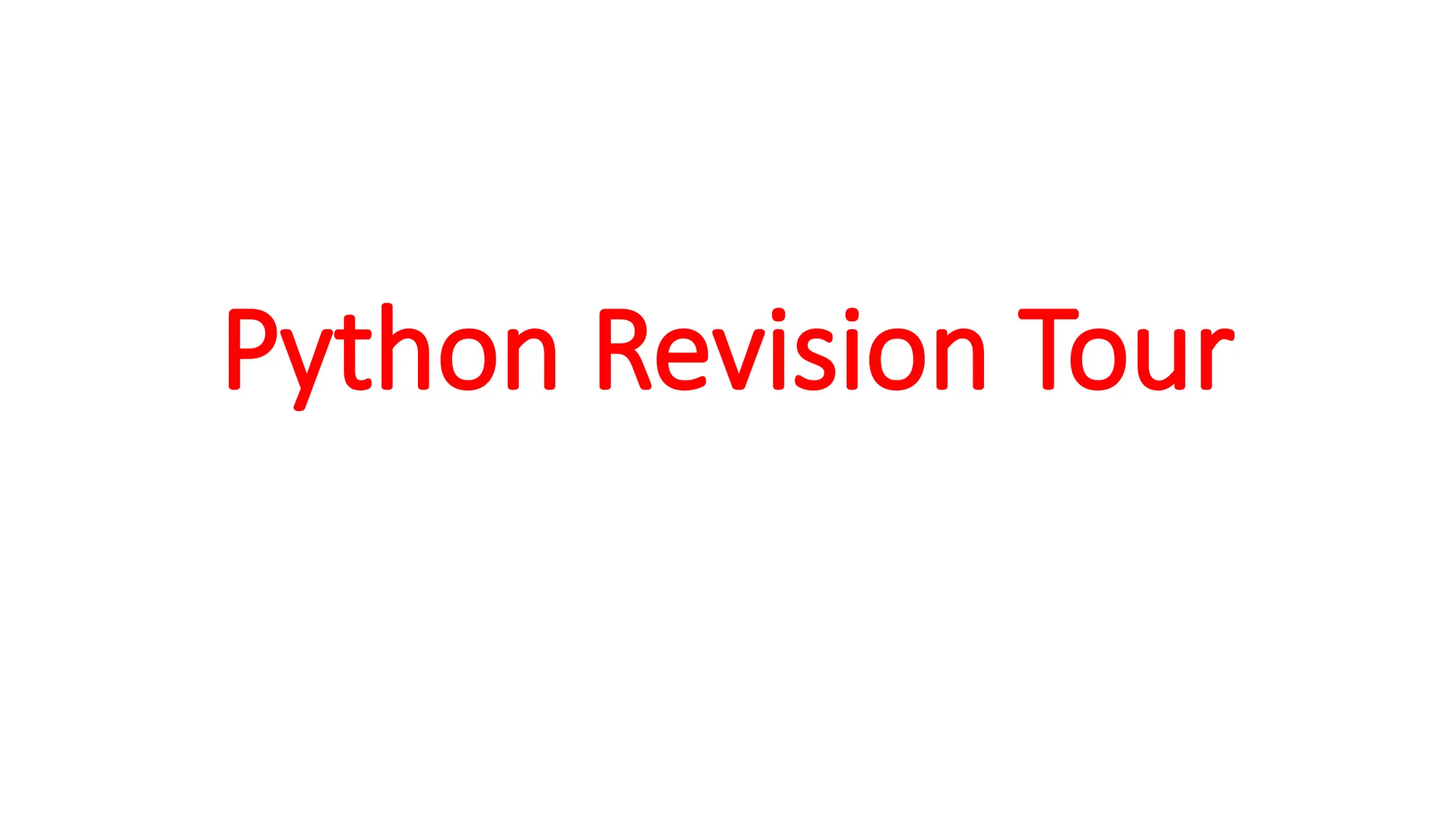
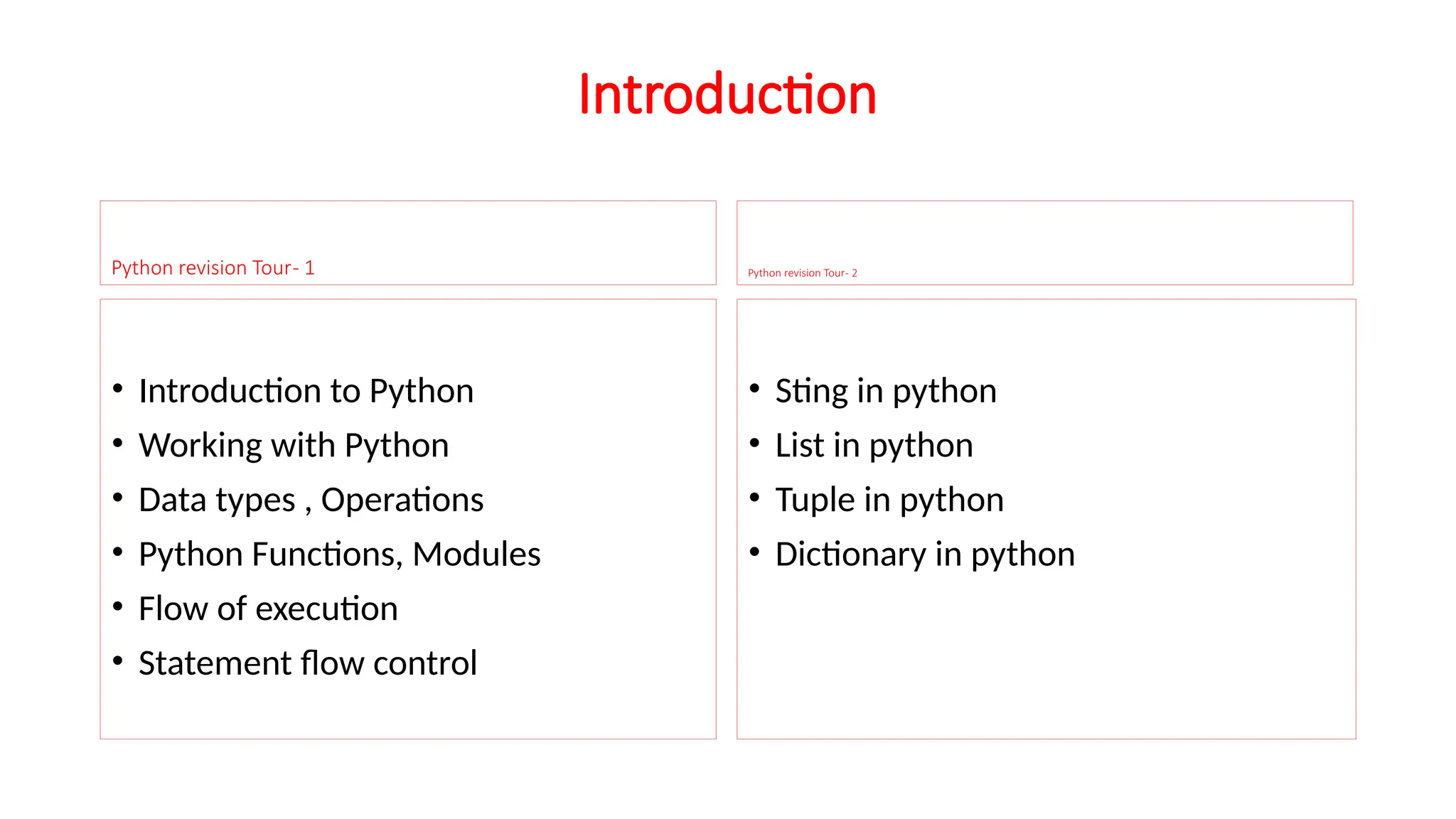

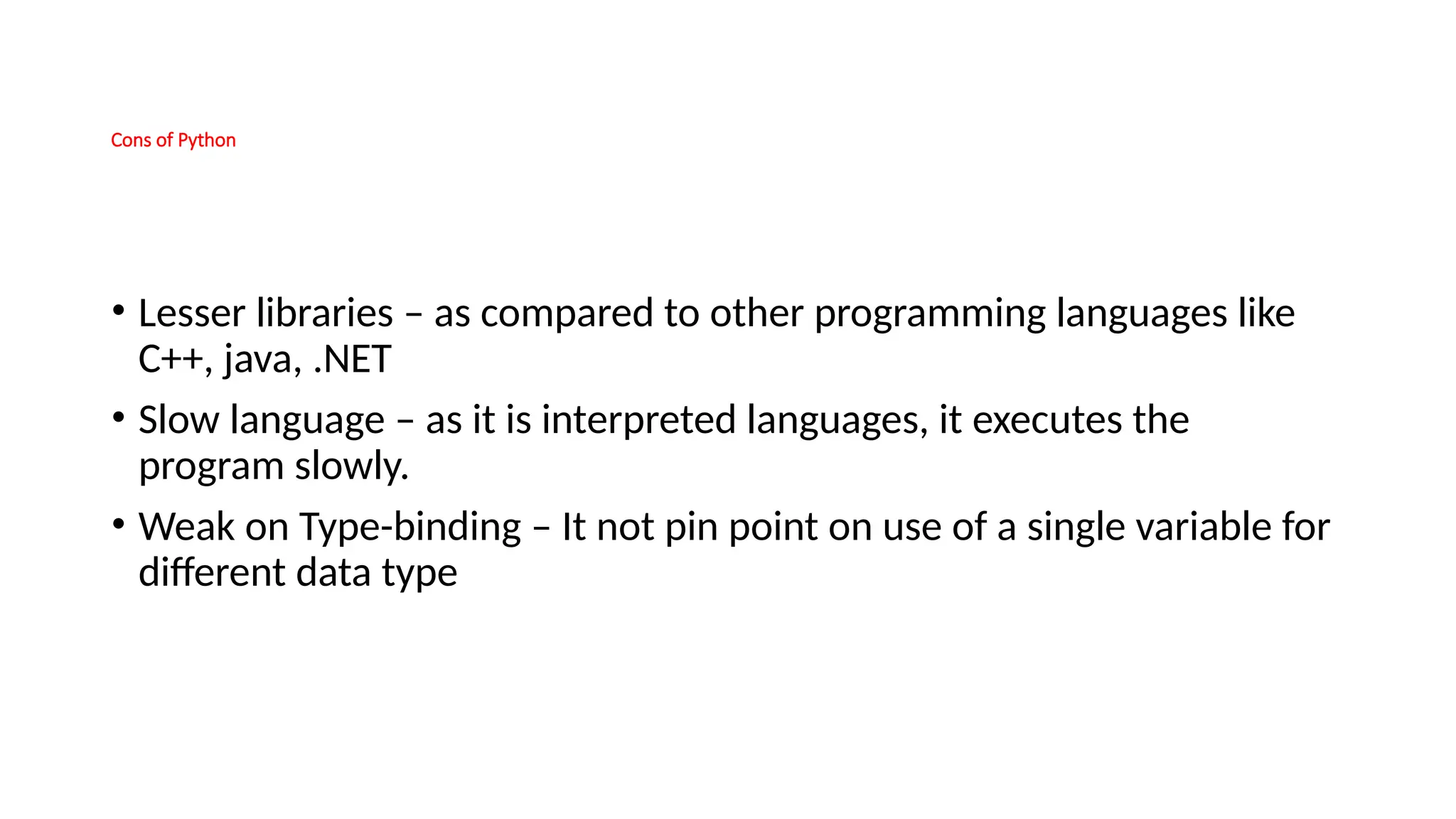
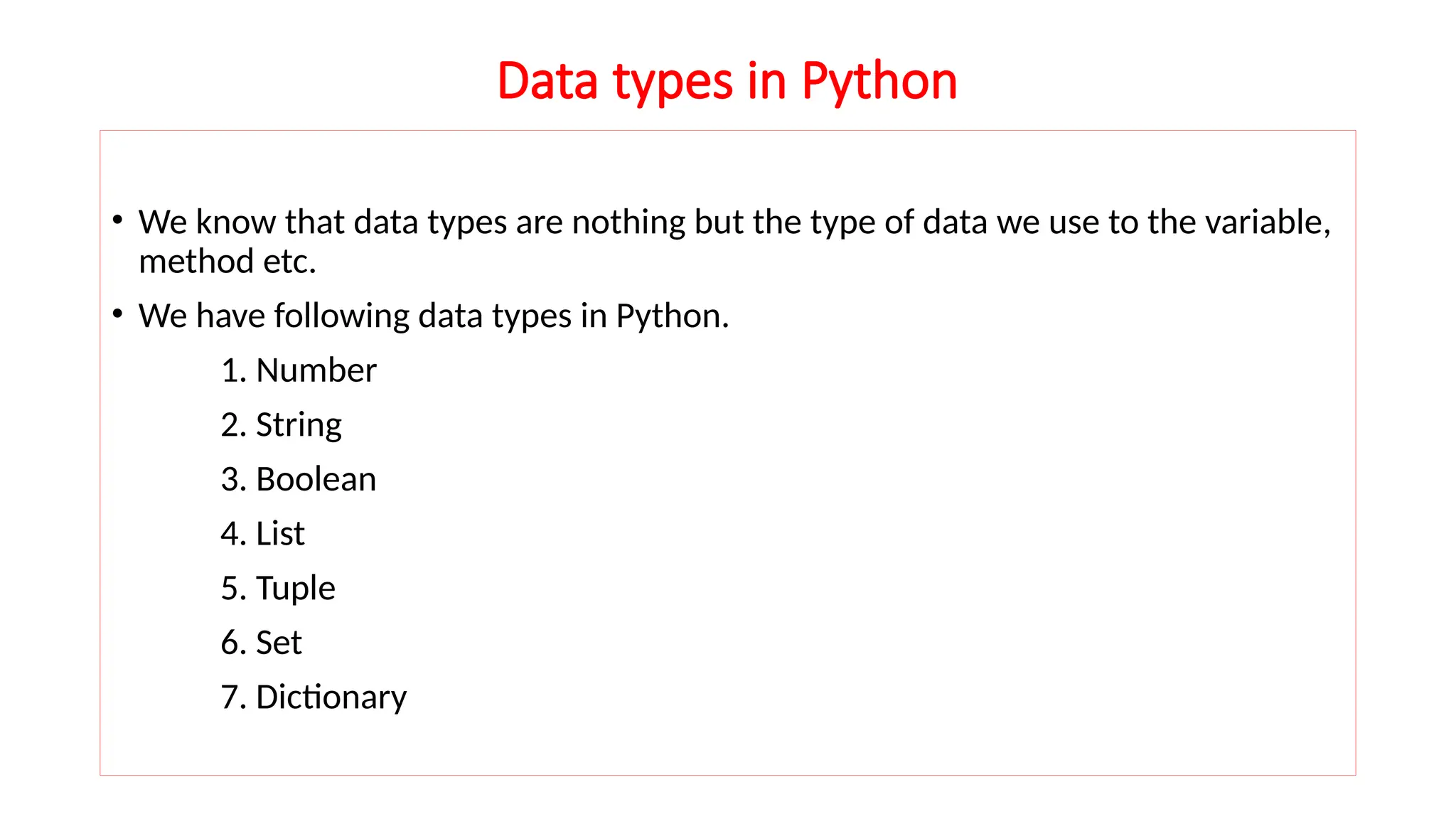
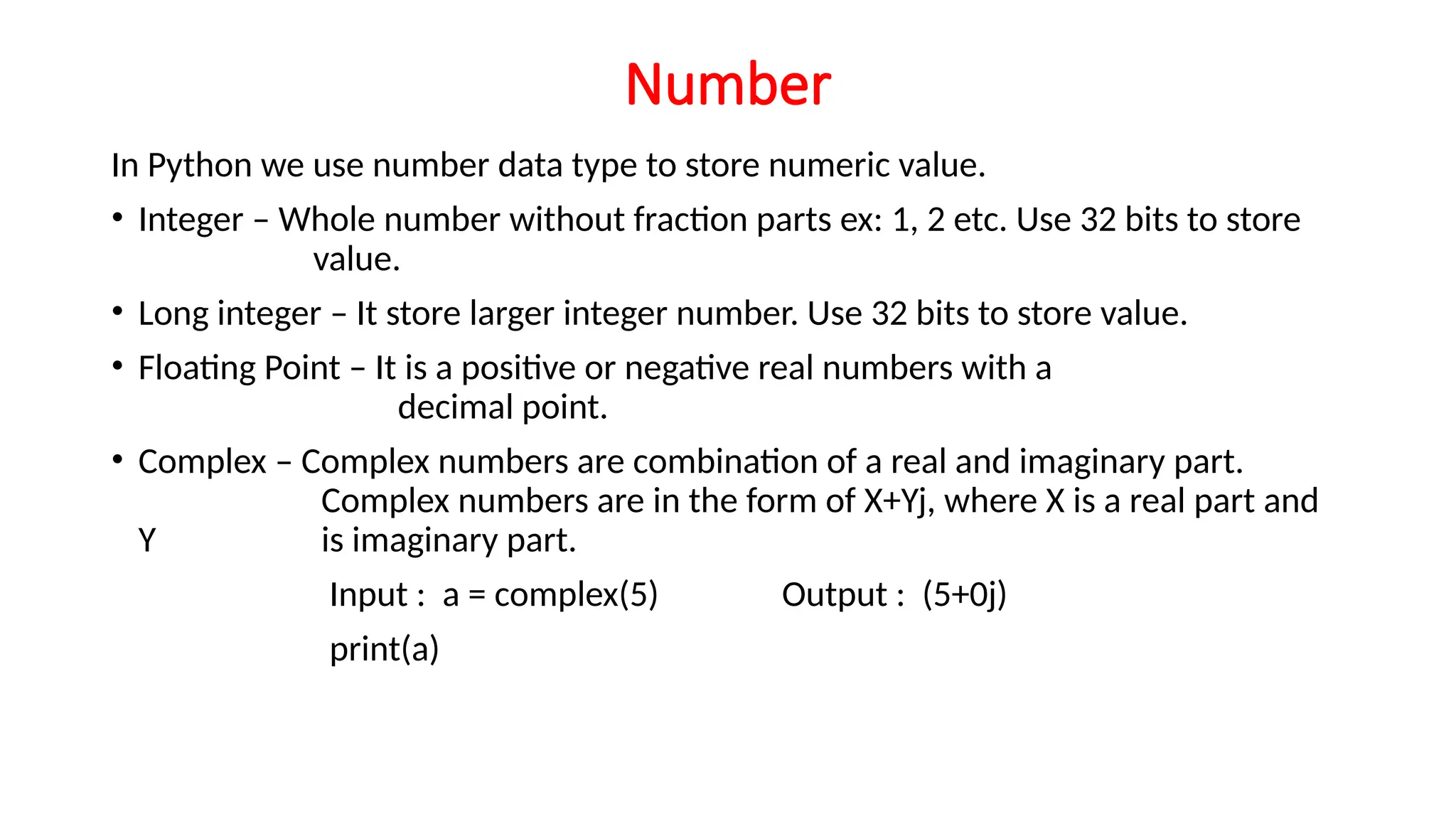
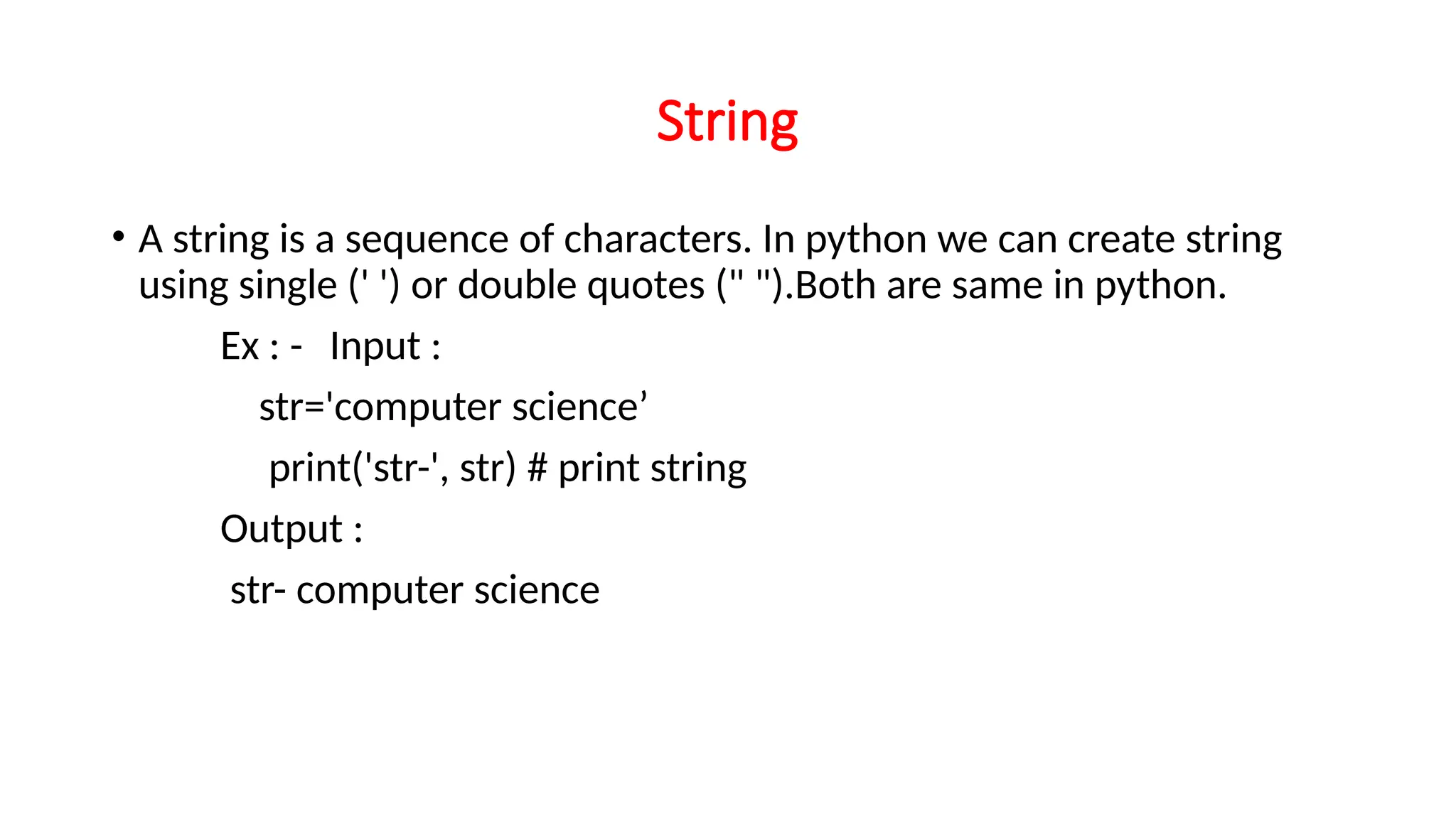
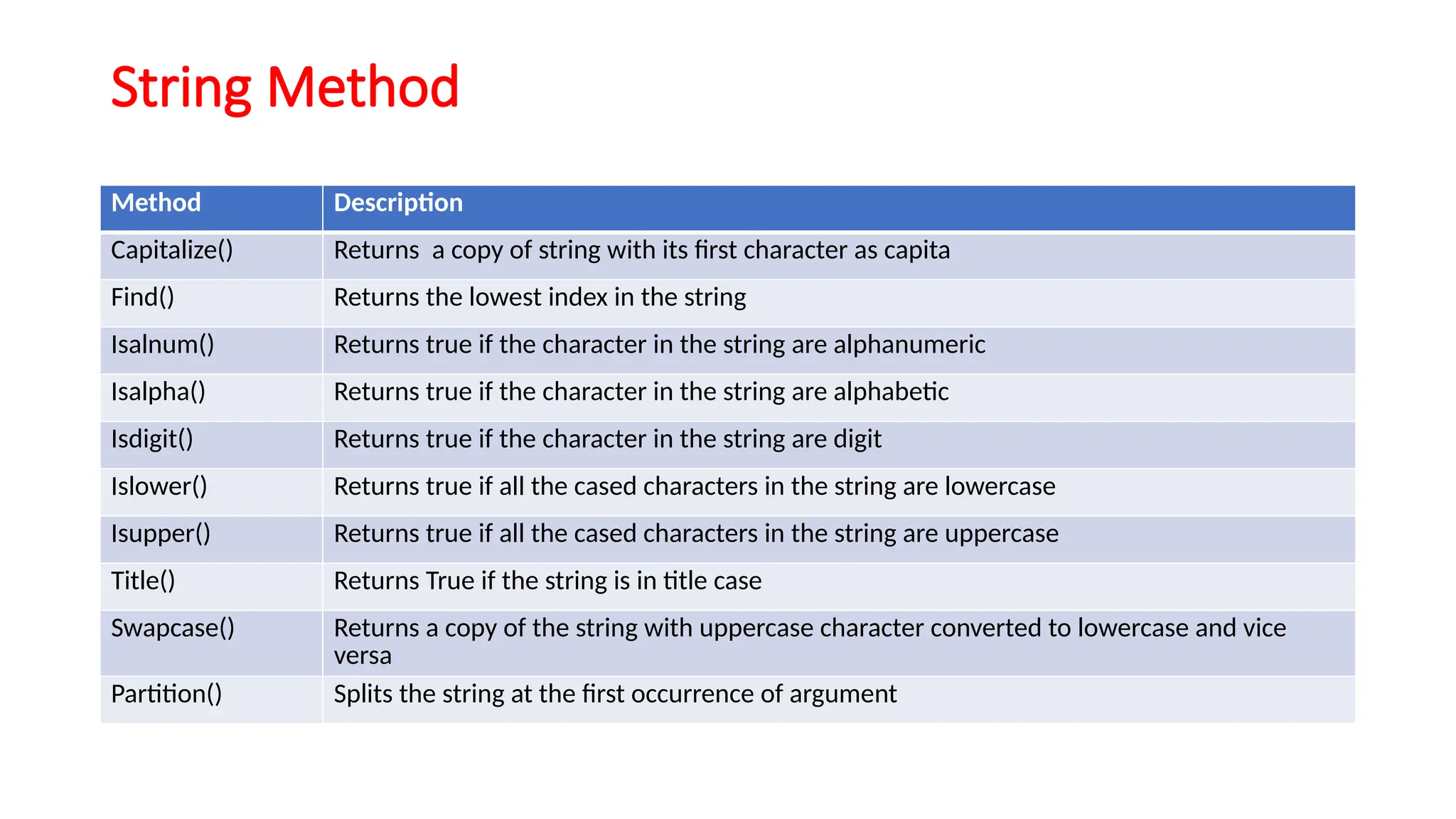
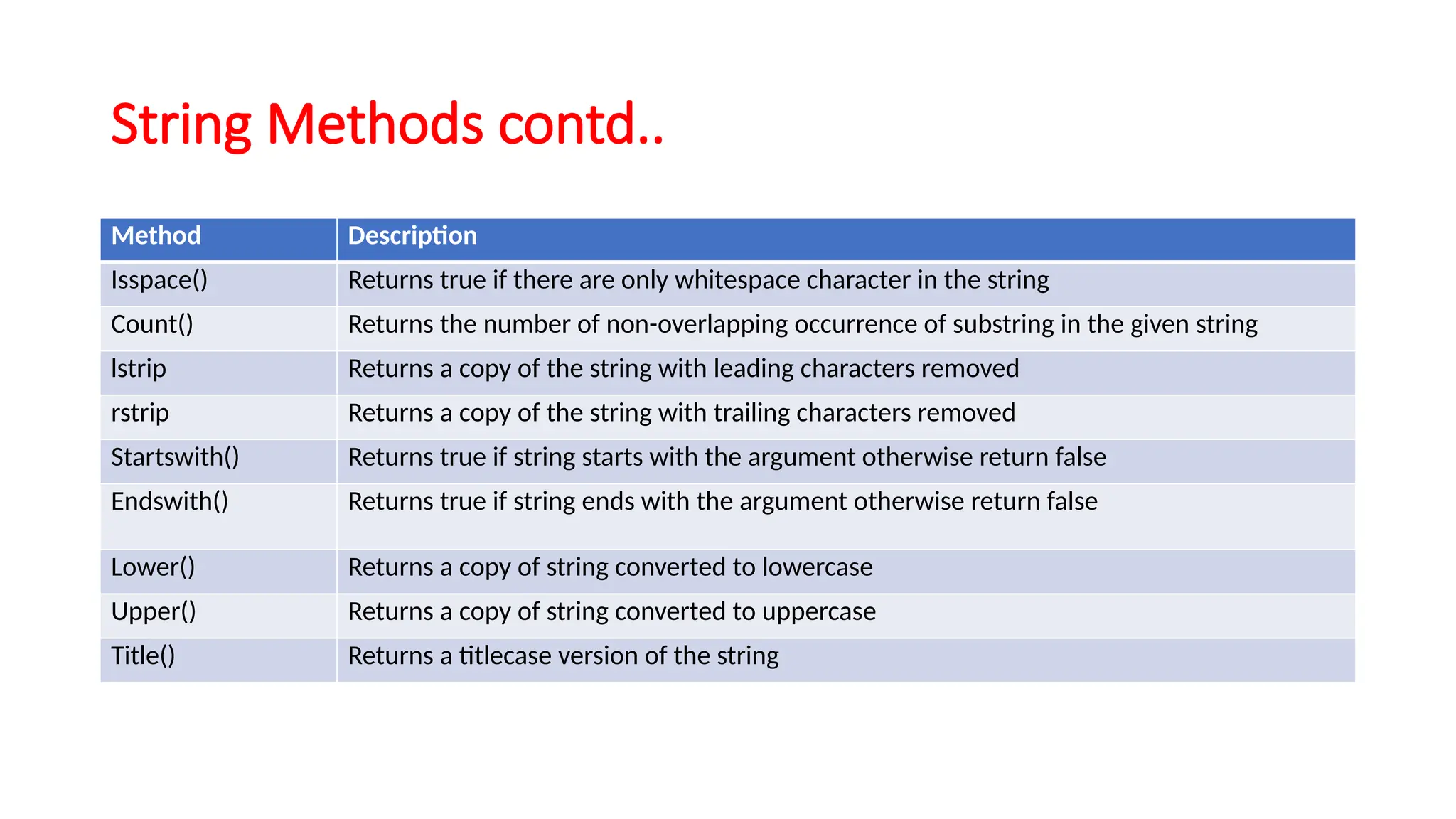
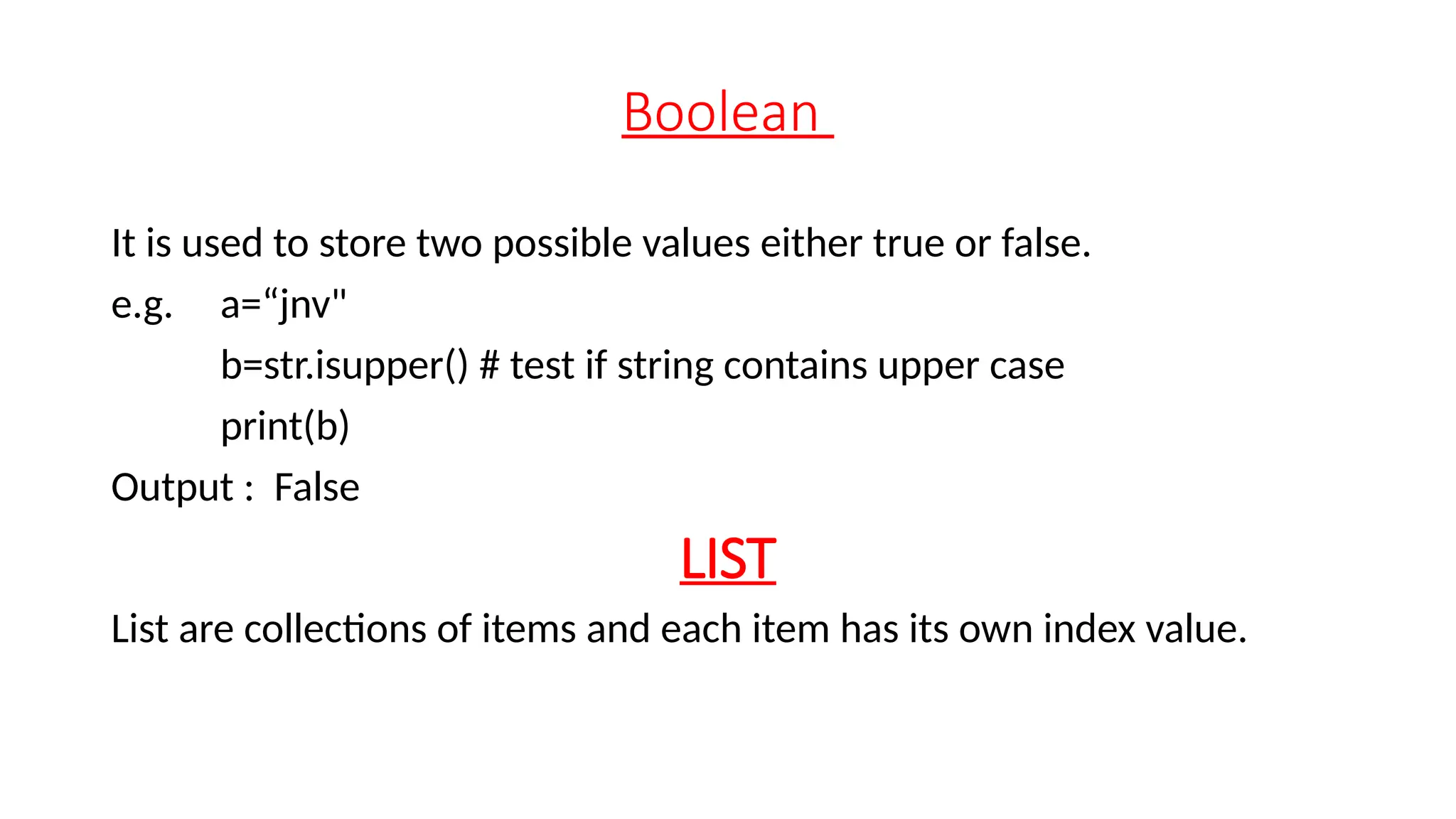
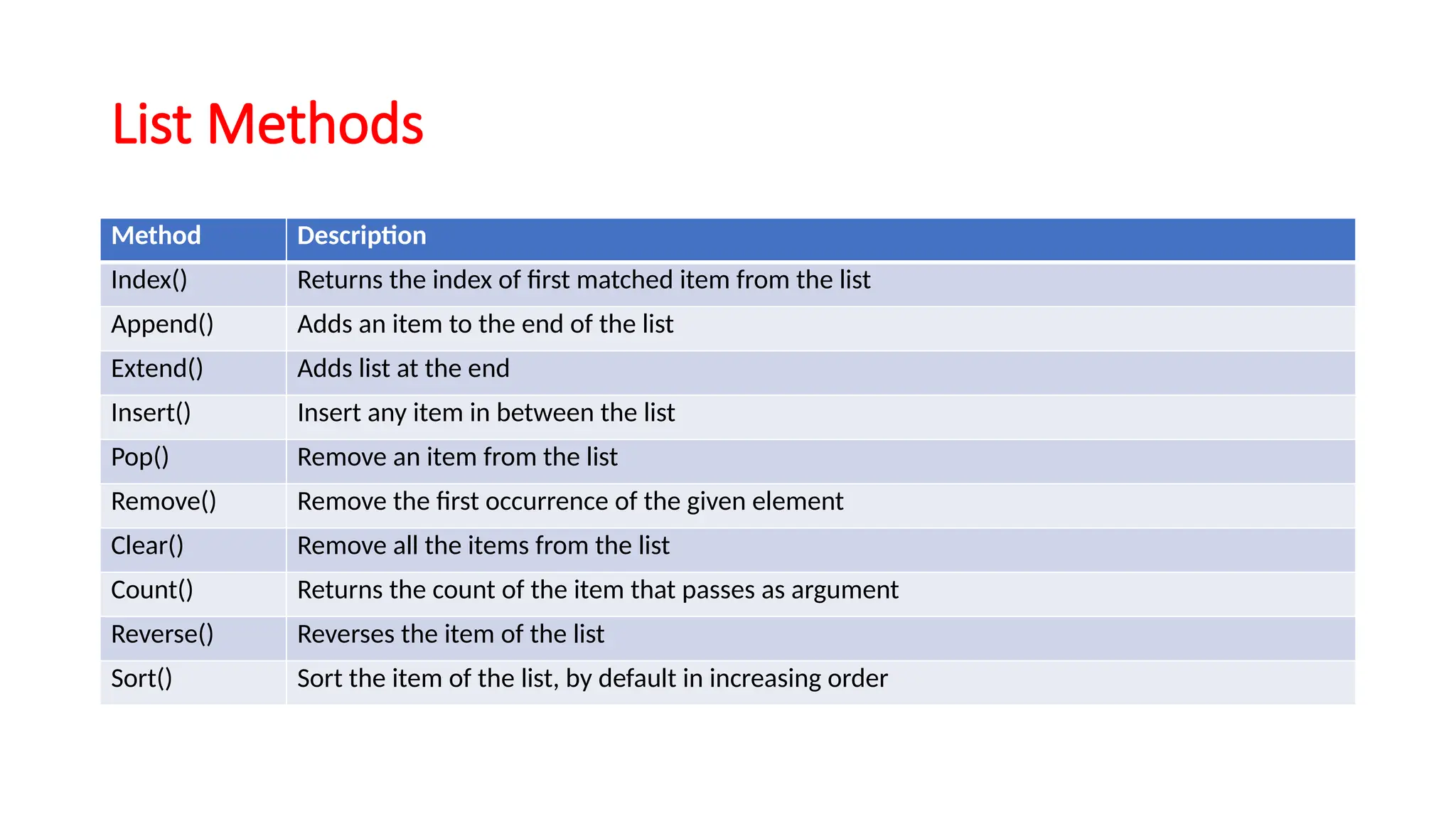
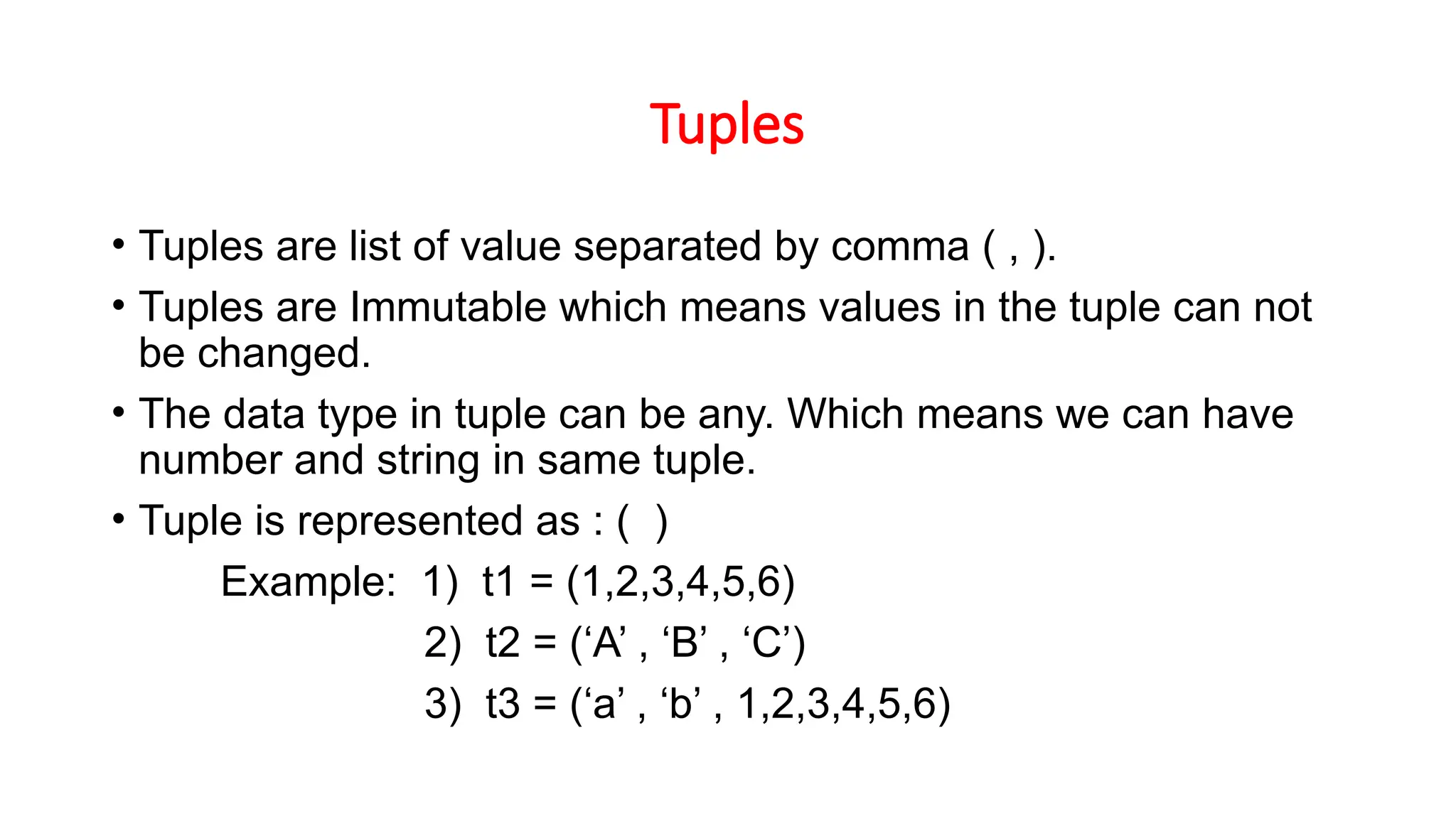
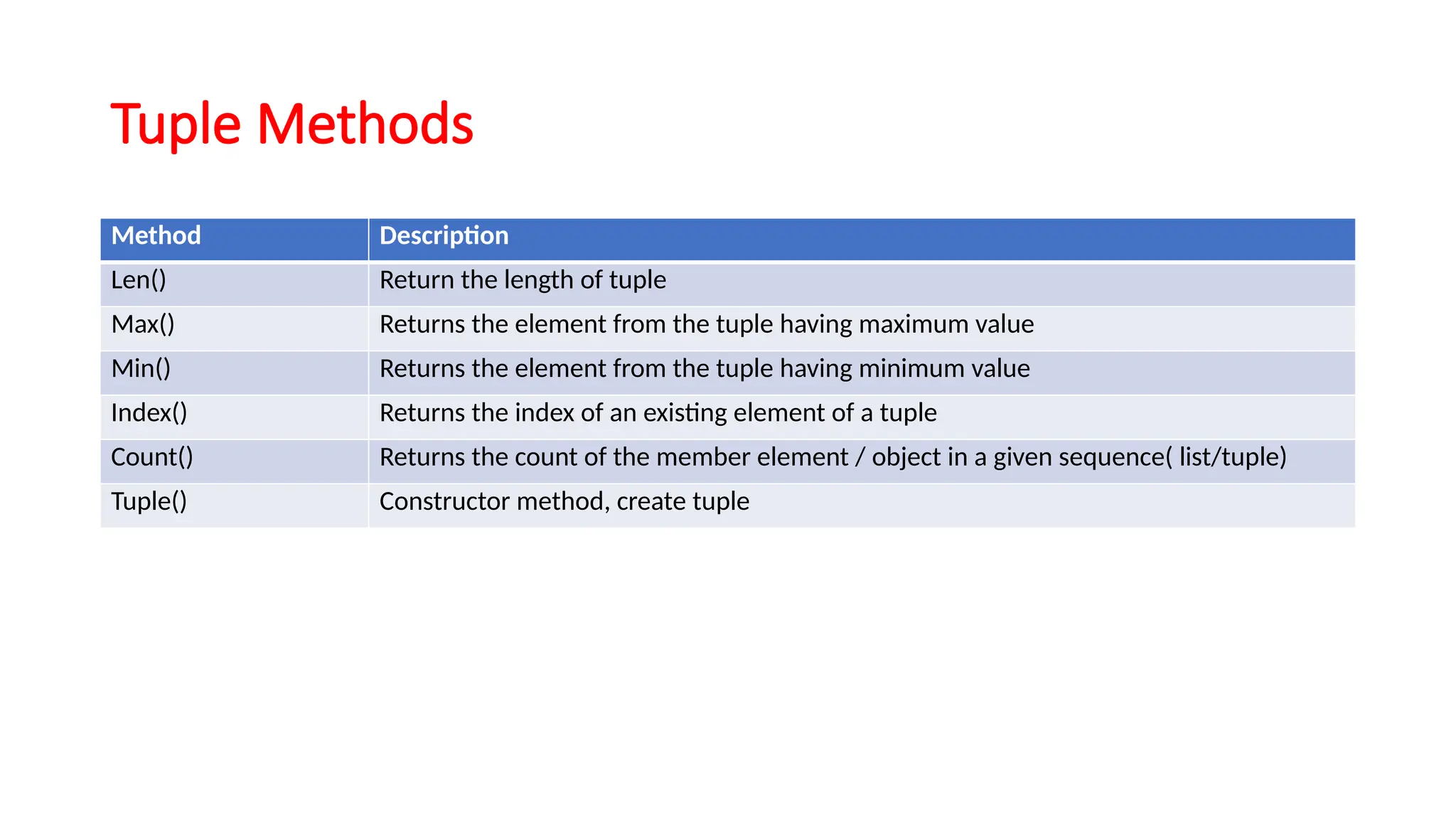
![Dictionary • It is an unordered collection of items and each item consist of a key and a value. e.g. dict = {'Subject': 'comp sc', 'class': '11’} print(dict) print ("Subject : ", dict['Subject’]) print ("class : ", dict.get('class’)) Output {'Subject': 'comp sc', 'class': '11’} Subject : comp sc class : 11 class : 11](https://image.slidesharecdn.com/pythonrevisiontour-241014130323-97efe00c/75/Python-Revision-Tour-pptx-class-12-python-notes-14-2048.jpg)
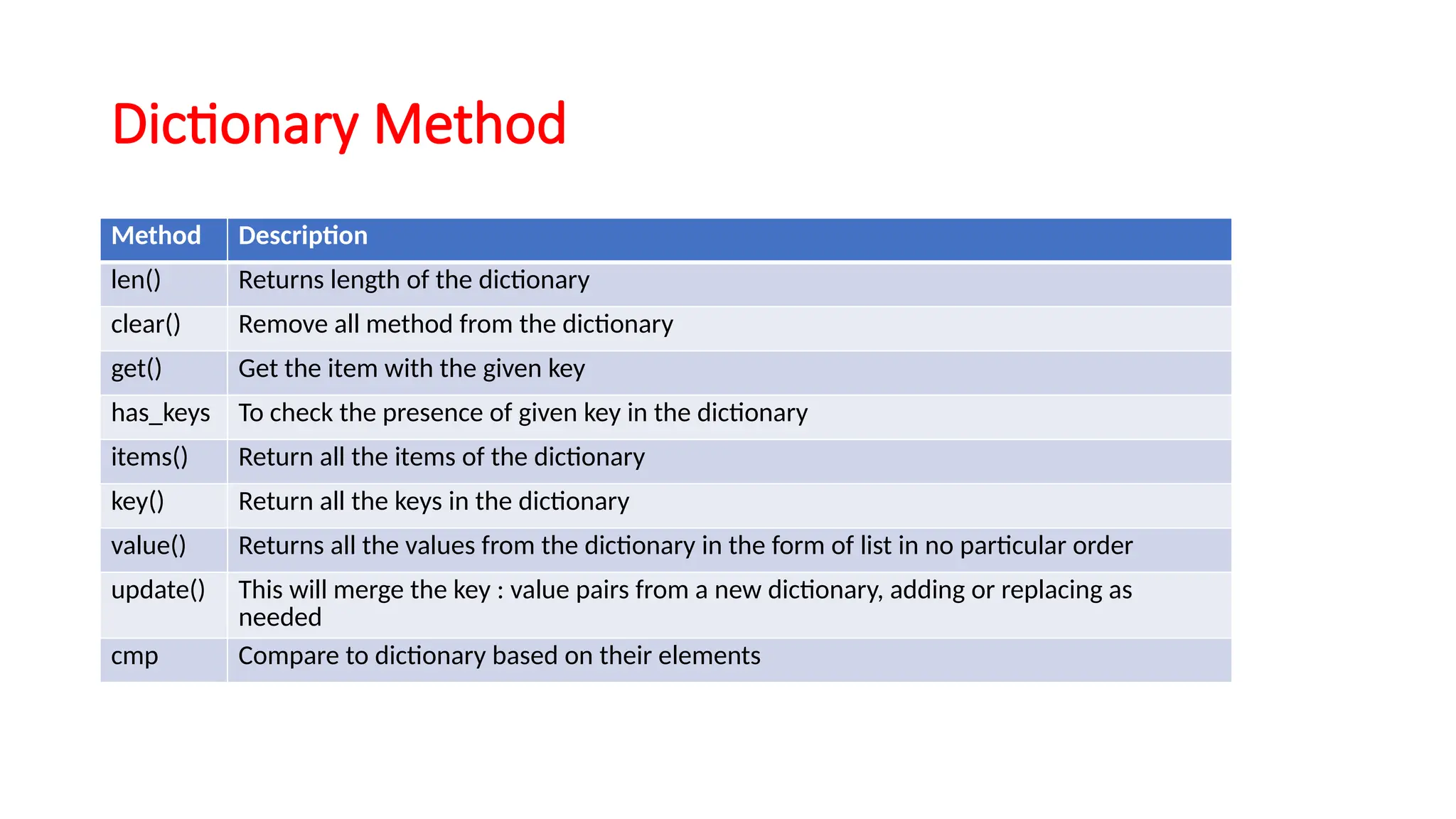
![List • A list in python is represented by square bracket []. • List is assigned to Variable • The value inside a list can be changed. example : (1) a = [1,2,3,4,5] (2) b = [‘A’ , ‘B’ , ‘C’] (3) c = [1,2, ’A’ , ‘B’ ]](https://image.slidesharecdn.com/pythonrevisiontour-241014130323-97efe00c/75/Python-Revision-Tour-pptx-class-12-python-notes-16-2048.jpg)
